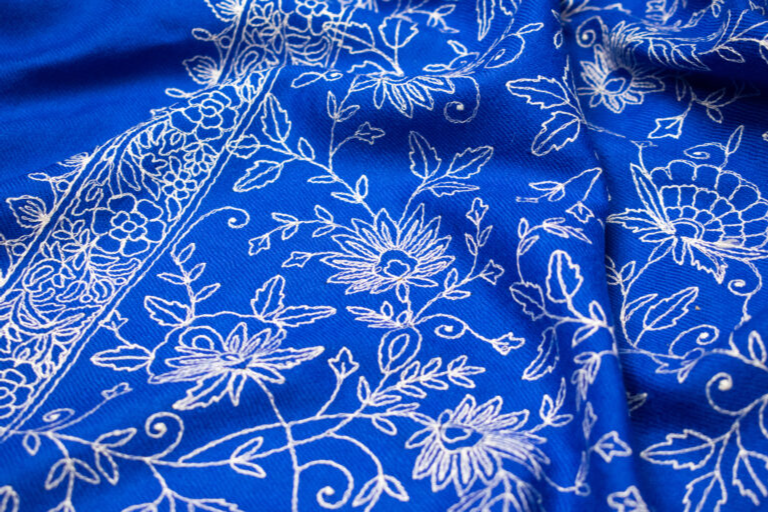When you think of true luxury, it’s not just about logos or fast-changing trends. Real luxury is timeless, handcrafted, and deeply meaningful. A Kashmiri shawl is the perfect example of this. Soft to the touch, warm in the coldest winters, and elegant in every season, it carries a story that begins in the Himalayas and ends in your wardrobe.
Let’s take a closer look at the fascinating journey of an authentic Kashmiri shawl—step by step—from raw cashmere wool to the finished masterpiece.
Step 1: Collecting the Wool – The Beginning of a Luxury Shawl
The journey begins high up in the Himalayas, where winters are long and harsh. Here, the Changthangi goat grows a thick coat to survive the freezing temperatures. Beneath its outer hair lies an undercoat that is incredibly soft and fine—this is what the world knows as cashmere wool.
In spring, herders gently comb the wool by hand. This protects the goats and ensures only the finest fibers are collected. It’s slow, patient work, but it’s the reason cashmere shawls are so prized worldwide.
Step 2: Spinning Cashmere into Yarn
After collection, the wool is cleaned and spun into yarn. This process is delicate—the quality of yarn decides how soft and durable the shawl will be. If spun too tightly, it loses softness; if too loose, the threads break.
The smooth, silky texture of a handwoven Kashmiri shawl is the result of this careful preparation.
Step 3: Weaving the Fabric – The Heart of Kashmiri Craft
Weaving is the stage where the raw yarn is transformed into fabric. In Kashmir, this is not just work—it is tradition. Families have passed down weaving techniques for centuries.
On wooden looms, artisans weave line by line, patiently creating the fabric. Some designs are simple, while others are intricate patterns woven directly into the fabric. Depending on the detail, a single cashmere shawl can take weeks or even months to complete.
Step 4: Hand Embroidery – Turning Shawls into Art
Many shawls are further decorated with embroidery, done completely by hand. Using fine needles and colorful threads, artisans stitch delicate flowers, paisleys, and flowing vines inspired by the beauty of Kashmir.
Some embroidered Kashmiri shawls take months of work, making them rare collector’s pieces. These are not just accessories—they are wearable works of art.
Step 5: Washing, Softening, and Finishing
After weaving and embroidery, the shawl goes through finishing touches. It is washed, stretched, and softened to give it a flawless drape. This step brings out the luxurious feel that makes an authentic Kashmiri shawl unique.
Step 6: Quality Check – Ensuring True Craftsmanship
Before reaching customers, every shawl is carefully inspected. Loose threads or flaws are corrected so that only the best pieces are sold. This strict quality control is why genuine Kashmiri shawls stand out from imitations.
Why Kashmiri Shawls Are Special
In today’s world of mass production, a handwoven cashmere shawl stands apart because:
- It’s timeless: a fashion piece that never goes out of style.
- It’s handmade: crafted by skilled artisans, not machines.
- It’s durable: with care, it lasts for generations.
- It’s art: embroidery and weaving reflect Kashmiri culture.
- It’s ethical: supporting artisans keeps traditions alive.
Keeping the Tradition Alive
The craft of making Kashmiri shawls has survived for centuries, but faces challenges from machine-made imitations. Choosing authentic, handcrafted shawls helps preserve this heritage.
One brand keeping this tradition alive is Kashmir Bloom. Working directly with artisans, they bring handwoven shawls, stoles, and scarves to the world—pieces that honor history while fitting perfectly into modern wardrobes.
Final Thoughts
A Kashmiri shawl is not just an accessory—it’s a story. From Himalayan goats to patient weaving and embroidery, every stage reflects dedication and artistry.
If you’re looking for a piece that blends tradition with luxury, explore the timeless beauty of authentic Kashmiri shawls. They are fashion that lasts forever, art you can wear, and heritage you can pass down.


